Needless to say, Wheeler's is not the gining-est gin that has ever gin-ed. It is also not so delicate, that such as the landing of sakura petals upon your arm in spring, your first sensory perception of their presence is simply by their smell. Nope, this is a gin, a real gin, that isn't afraid to know when to hold em and know when to fold em (right now the people at Santa Fe Spirits are probably cringing and saying "why did we let these city-people touch out awesome stuff?"). It's because we know a good thing when we drink it and Wheeler's is a great gin that delivers exactly what a gin should, without harsh tones, over-powerful menthol flavors, or hastily distilled base spirits. People think that because gin is a clear spirit, it's simple, but in fact the opposite is true. With no oak-smoke to hide behind, gin has to bring it's A game to the table right out of the gate, without the benefit of added time or a caramelized smoke screen. Sante Fe Spirits knows this, and you dear imbiber get to enjoy the benefits of their wisdom.
Wheeler's is also unique, in that along with juniper, it includes cascade hops, white sage, osha root, and Cholla (that's pronounced Choi-Ya) Cactus blossoms picked directly by the distillery. The end result is a gin that can not only hold it's own in a martini, but can also mix into recipes which are extremely delicate. And we're about to show you exactly that:
Santa Fe Spirits's Wheeler's Gin
in
The Martini.
You may remember in our original martini episode, we used a gin that was of the London Dry variety. These are very good and they are popular, but they are not the same as other gins, as we are about to see.
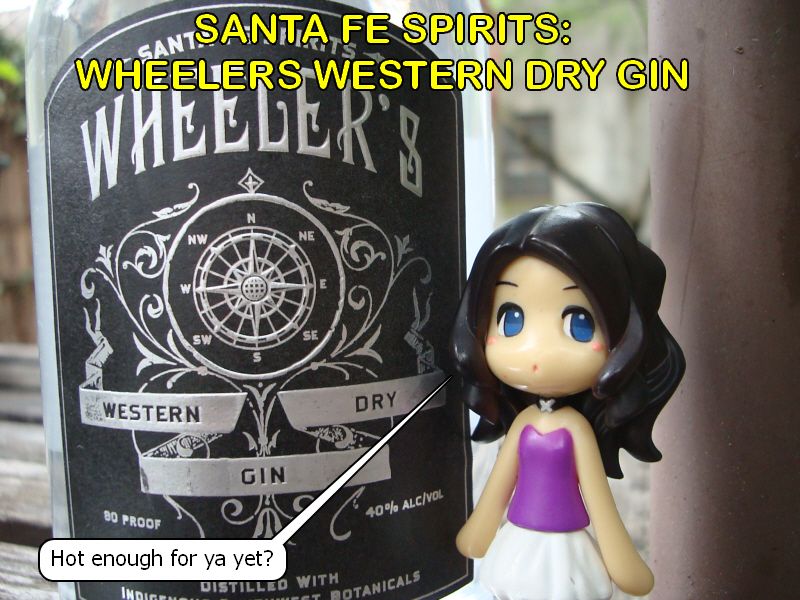
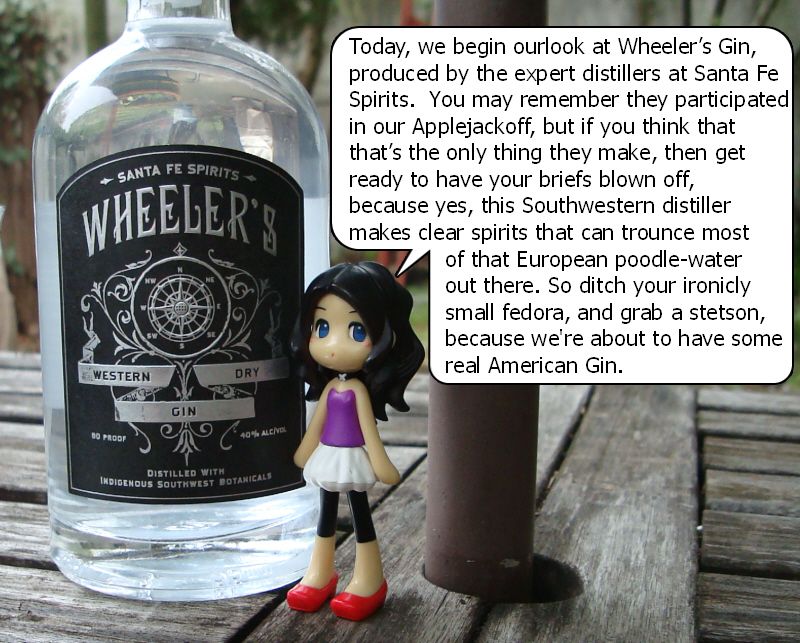

The Martini is very cruel to gin. If the gin isn't good, it will put those qualities straight out there and let you know about it. Even gins that are ok to use in other drinks are slain at the hands of this very serious recipe.
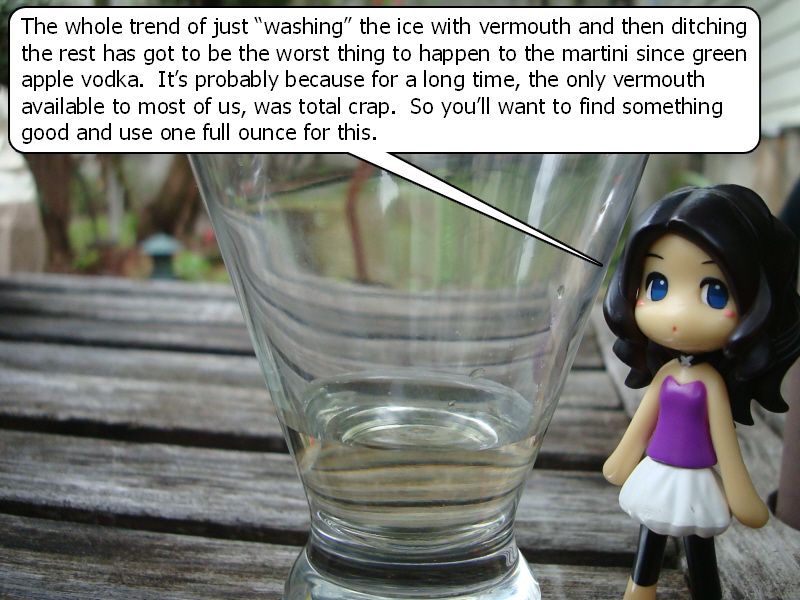

What we have here is a premium dry vermouth, but our "friend" who brought it happened to put it in an unmarked container, so we can't show you the actual label name. Maybe they were afraid to carry it with them, or maybe they were afraid we'd end up drinking it all (a distinct possibility), but either way, you'll have to wait for a future post to find out about quality vermouth. So thanks for that ya dork (you know who you are).
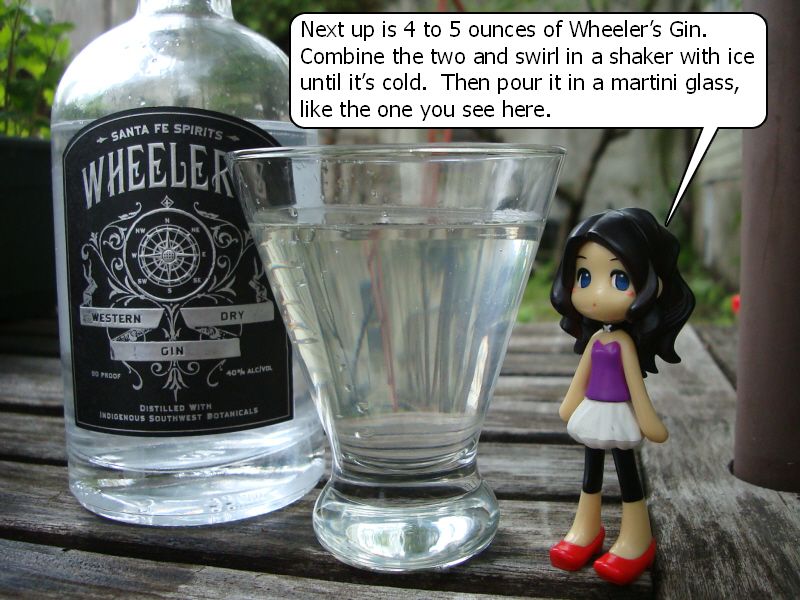
Some martini purists out there are going to hem and haw about how the gin must be at least some ridiculously low temperature. This is straight up wrong. Gin is an aromatic. An aromatic doesn't work, if it's something like minus a kergillion-billion degrees below zero, because you're not gonna smell anything! Chilled, yes. Freezing? No, you're doing it wrong.
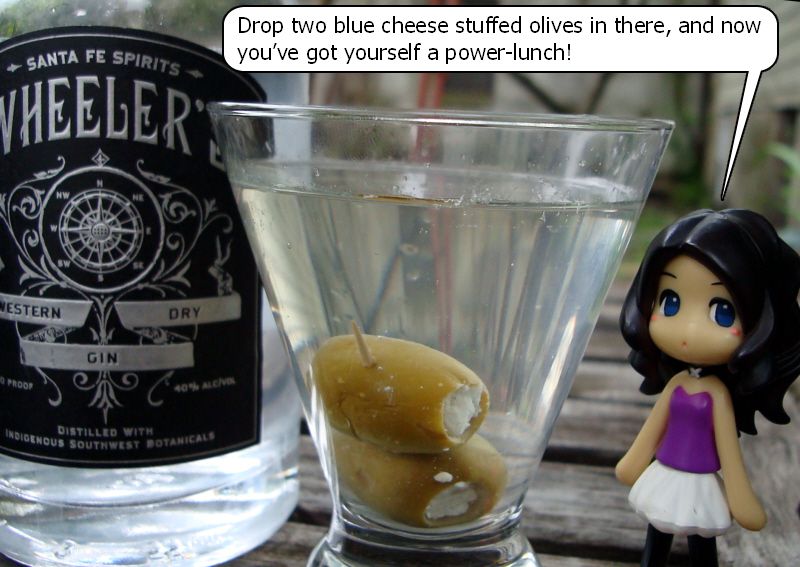
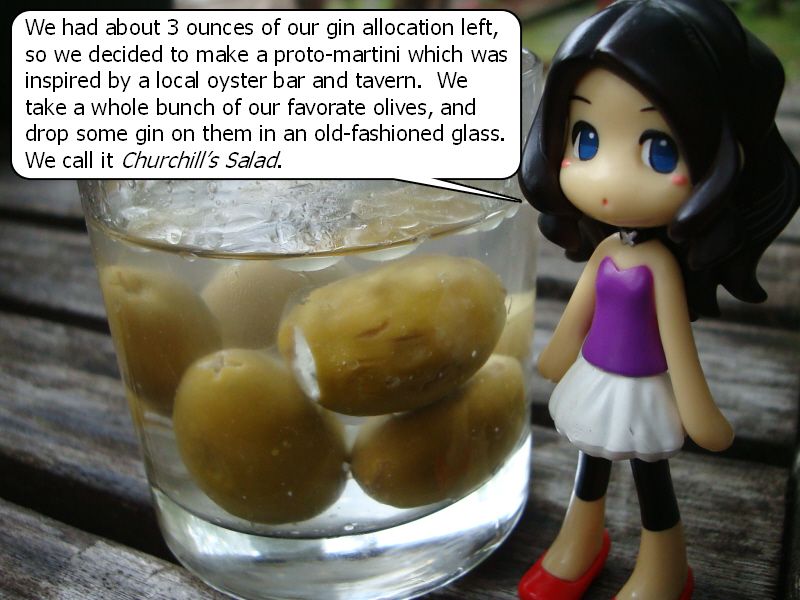
While they don't drop that many olives into it, the martinis served at (now defunked) Cornelius Oyster Bar in Prospect Heights Brooklyn, were actually similar to this, in that they often had quite a few lose olives floating around in a class such as this. One (or 2) of these and a plate of raw bluepoints were the absolute best way to end a hard day at work, and still end up spending less than $20.
In the end, Santa Fe Spirits Wheeler's Gin goes well in a martini or just on the rocks. The gin itself has a unique background noise to it and we're assuming that it's the Cholla Cactus flowers, but since we've never had Cholla Cactus flowers, we can only assume that's the case. It's no bottom shelf gin and seems to work best when it's between 45 and 35 degrees Fahrenheit. Though for science sake we did taste 2 separate neat ounces at room temperature to see what was what. While amplified, the searing that often happens with mass-produced gins was not there at all, while surprisingly the botanical strength was very pleasantly strong. A great accompaniment to a hearty herbal focaccia in the shade on a summer afternoon.
Next time, Wheeler's Gin in: The Yankee Rose.

No comments:
Post a Comment